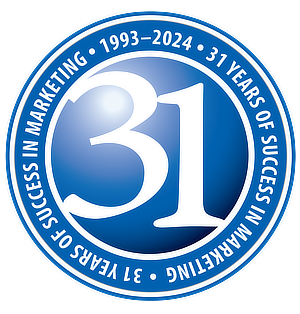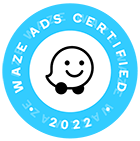Chances are, the car you drive gets more miles per gallon than the one you had 20 years ago. Company fleet vehicles are going further on less fuel as well. Your office computers boot up in seconds, not interminable minutes, and the dreaded “loading” ring is a thing of the past, thanks to wider broadband and system capabilities. There’s no question that the equipment you use every day is more efficient than it was “back in the day.”
Despite these advancements, many long-standing companies insist on running their businesses with processes that were developed when billing, scheduling, and orders were tracked and managed from a spiral-bound notebook kept in the company owner’s pocket. First- or second-generation owners insist that “this is the way we’ve always done it,” as “young guns” chafe at their parents’ business myopia and watch profits and market share dwindle.
Here's an uncomfortable truth: the “young guns” are correct. Automated and digital processes will not only reduce business expenses but also attract customers, even in the most competitive markets.
We’ve pulled together a list of “office upgrades” to bring your company’s operations into the 21st Century and meet customer expectations.
- Online Payments. There’s no getting around this one. Everyone, from octogenarian great-grandmothers to Millennial new homeowners, expects to be able to log onto your website and easily make a payment to their account. If the customer is always right, this is one digital service you should not skip: you will be paid more quickly, will no longer hear that “the check is in the mail” and will have a record of the payment if a dispute arises. The most basic systems provide you with notice from your credit card processor that the payment was made so that your bookkeepers can enter the information against the customer’s account. A more advanced system would integrate your payment gateway with your account management system, so the payments are credited automatically.
Many companies are going beyond credit and debit card and ACH transactions to accepting payments from digital wallets and services such as Venmo and PayPal. This, again, is a service that is more widespread than many realize: 22 percent of Baby Boomers use digital wallets and payment platforms; 45 percent of Millennials and Gen-Xers; and more than 60 percent of Gen-Z do so. (While the youngest Gen-Z members are only 11 years old, their older generational cohorts were born in 1997 and, at 26 have their own sources of income.) Are you ready to disappoint so many of your current and future customers? - Self-Service Customer Account Portals. How much of your staff’s time is spent answering simple questions? Customers calling to ask, “What’s my account balance?” “Can you send me my last bill?” “When should I expect my delivery?” An integrated self-service portal pulls this data from your account management enterprise software, gives your customers the opportunity to find these answers themselves, and frees your customer service representatives to focus on more complex issues.
Case in point: we recently compared the customer service loads of two similarly sized companies, one with an online portal and one without. The business without a portal fielded 3,133 contact-us web page requests, each one requiring a customer service representative to review the request and respond by phone or email. That’s a lot of work hours! The company with a portal received 41 percent fewer contact-us requests (1,842), and had customers visit its online portal more than 33,500 times to make payments, look at contracts, view service information, transaction histories, and more. That saves a lot of work hours!
This is more than a simple matter of easing the workload in your office. This is something every customer expects. Approximately 90 percent of consumers expect a company to have an online portal, 61 percent would start researching the information they seek on a portal before contacting your office, and 60 percent prefer an automated portal for simple tasks. - Integrated CSR Applications. Your office staff will benefit from a dashboard of their own when you integrate your enterprise software with an online portal. The internal dashboard gives your Customer Service Representatives and managers immediate access to all the necessary data for each customer: payments, invoicing, delivery and service schedules, value-added program enrollments, service location and one-click connection to multiple locations under a single billing account. The dashboard will also enable your CSRs to more quickly assist on customer calls, view the portal as the customer sees it, and walk them through any procedural questions. Modular dashboards can be expanded to provide access to other integrated business services or features.
- Streamlined Sales and Lead Tracking. A digital sales tracking software can help turn new business leads into new business accounts. A centralized system should be accessible from each sales representative’s smartphone or tablet, so they can call up key details and documents related to the customer, home, or project. Automated reminders to the sales team as well as management keep new business opportunities top of mind and prompt follow-ups, emails, and other next steps to move the customer though the sales funnel. If your sales tracking software is integrated with your enterprise software, the new customer information can be automatically converted into a new account.
Sales tracking software also speeds up progress reports and end-of-period results and can quickly compare sales by rep by number or value to make it easier for management to acknowledge and reward successes and provide additional training and attention to reps who are not meeting expectations. - Online Enrollments. Service plans. Automatic subscription programs. Loyalty programs. These value-added programs are the foundation of a strong customer retention strategy. With online enrollment, your customers can opt in at any time, make any required upfront payments, and have their status updated in your account management software within hours (if not immediately).
- Email and Text Messaging. Look around. People everywhere are using their phones to place orders, receive and respond to promotions, get news updates and communicate with friends, family and business associates … by text. Consumers prefer communicating by text or email to making phone calls. (We can consider what that means to society at another time.) A robust, opt-in text and email system will allow you to send urgent notifications to all your customers at once, or to send personalized communications to targeted customers based on their account data and history. Text and email can be used to send appointment reminders to minimize “no shows,” and follow-up surveys or requests for online reviews. Further integrating with customer data, accounts that are regularly late on payments can be prompted to enroll in budget and automatic payment plans. New product notifications or other promotions can be sent to customers meeting campaign specific parameters. The options are virtually unlimited, as you coordinate customer data with your sales goals to get the right message into the right hands at the right time.
- Digital Billing. It’s the beginning of the new month. Last month’s invoices and statements need to be printed, folded, inserted, stamped and mailed. How many work hours are spent each month getting them out in your company? How much money are you spending each year on paper, toner, envelopes and postage? Have you ever thought, “there has to be a better way?” There is. It is more efficient and more cost effective. Third-party bill presentment systems process your daily and monthly invoices and statements; send printed invoices to customers who haven’t transitioned to paperless; and disseminate digital invoices to those who have. Custom messaging can be added to the invoices to promote paperless billing, automatic payments, budget plans or other products and services. Your cost per invoice is less than your combined costs of staff, overhead and supplies for in-house billing. Invoices are ready for review less than 24 hours after the data has been securely transferred to the system and disseminated almost immediately after approval. Because the entire process is completed via data transfer, there is less of a chance of human error than with traditional billing procedures. Less stress, better production schedules, and lower costs - a perfect definition of operational efficiency!
- Customer Onboarding. Once upon a time, onboarding new customers was a time-consuming task. But this is no longer “once upon a time.” By the time a prospective customer has contacted you, they have already visited your website, checked your online reviews, scrolled through your social media, and spoken to friends or neighbors who use your services. With online new customer onboarding, prospects can enter their home, billing, and credit information; enroll in budget and loyalty programs and more, automating the entire process. Instead of CSRs having to manually input the information, the system can process the information, create an account in your backend system, and alert the appropriate personnel in your office about the new account and next steps. This system is available 24 hours a day, 7 days a week, holidays included.
- Find a Pro. The most important “operational efficiency” tip of all is to not do everything yourself. You are an expert in running your business. You are not an expert in custom online systems development. When implementing any of the previous recommendations, choose software developed around the unique needs of small or medium sized businesses and a partner who understands those needs. Off-the-shelf programs will not offer the flexibility or options your business requires. The web-developer son of your best friend’s sister-in-law will not understand the complexities of a multi-tiered pricing program or the market-based variables in billing and will not have the needed experience to customize software or integrate that software with your industry-specific enterprise software.



